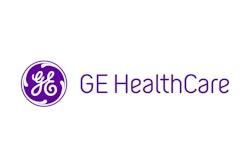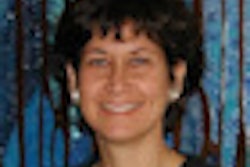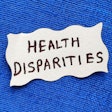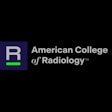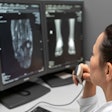
AuntMinnie.com is pleased to present the next installment of Leaders in Imaging, a series of interviews with individuals who are shaping the radiology landscape. We spoke with David Dowe, MD, medical director and coronary CT angiography (CTA) program director of Atlantic Medical Imaging in Galloway, NJ. Dowe also serves as an attending radiologist at AtlantiCare Regional Medical Center in Atlantic City and Shore Memorial Hospital in Somers Point. He is recognized as an authority on issues of safety and efficacy in diagnostic imaging and collaborates on coronary research and development.
AuntMinnie: Where does cardiac CT stand now in clinical practice? How accepted is it as a routine clinical modality?
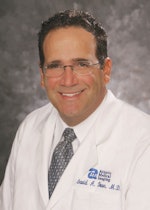 |
| David Dowe, MD, medical director and coronary CT angiography program director of Atlantic Medical Imaging. |
Insurers are reluctant to accept the argument that any one imaging test will result in cost savings. They claim they've been burned by this argument. But they're short-term thinkers, concerned with how they're doing this quarter rather than long-range. In fact, most insurers employ radiology benefits management firms [RBMs] to limit imaging utilization. RBMs are now taking on risk-sharing contracts with insurers, under which they're paid a flat monthly fee to limit imaging.
[The technology's acceptance] is also complicated by opinions that come out of the cardiology community -- that coronary CTA isn't ready, that it's never been proven to have worth. Everyone knows that cardiologists get income from stress tests, and no one wants to tip the status quo.
How does the current cost-curbing economic environment affect cardiac CT's acceptance?
The reimbursement crunch is real, and no one is quite sure what Obamacare will mean. Millions more people will have benefits, and that suggests increased use of imaging services, but as to what level those services will be reimbursed on, it's like we're all in a dark room.
Do you see any changes in the turf battle between radiologists and cardiologists over cardiac CT, given the Deficit Reduction Act (DRA) and healthcare reform?
When I first got involved in coronary CTA, it was really radiologists versus cardiologists. That's broken down now. Now it's a debate between "believers" in coronary CTA, who include many radiologists but also other specialists, and "nonbelievers," who are strictly cardiologists.
I say, let's do the right thing for patients and we'll all prosper.
Have you seen any change in use patterns of CT among cardiologists, given the renewed attention on physician self-referral?
I will tell you this, in my state of New Jersey, insurers have made it impossible for nonradiology specialists to put MR, CT, and PET units in their offices. People have known about self-referral for forever, but now dollars are so tight they're willing to do something about it.
Where does the debate about finding soft plaque versus coronary artery calcium stand now?
Cardiology is still going back and forth on the value of calcium scores, and those have been around for 20 years. The argument for finding soft plaque is becoming increasingly accepted. A paper came out a year ago from Japan that found that soft plaque with low density and positive remodeling carried a higher risk of causing acute coronary syndrome than if either one or neither of these characteristics were present.
There's nothing new about [the idea of tracking soft plaque]. What's new is that we can see these plaques before they cause symptoms. But the role of soft plaque in coronary artery disease has been around since the early 1990s. In 2001, I started doing a few coronary CTA cases on an eight-slice CT. I was finding the plaques, and it wasn't hard to put two and two together.
What's your perspective on the radiation safety issue? Are clinical protocols safer?
The radiation argument against coronary CTA is and has been a political football used by cardiologists. Even without the prospective gating we have now and ASIR [adaptive statistical iterative reconstruction, a proprietary noise-reduction algorithm developed by GE Healthcare of Chalfont St. Giles, U.K.], the radiation dose was never more than that of a nuclear medicine stress test. We are doing coronary CTAs at ultralow radiation doses, 0.4 to 8 mSv, as compared to nuclear medicine tests with [technetium-99m] sestamibi at 17.2 mSv, or with thallium-201 at 25 to 35 mSv. Coronary CTA is the lowest radiation CT scan I do anywhere on the body.
What's your perspective on imaging innovation and the current healthcare environment? Where do you see imaging growing in the next five to 10 years?
I see imaging growing despite all the pressures against it. We have an aging population -- the demographics are undeniable. Imaging will grow because it's necessary. I hope [its practice] will be smarter, that there will be less unnecessary exams performed and more radiation saving protocols. But no one knows how it will get paid for.
And by the way: I don't consider myself a leader. I'm just trying to make things better for patients and for radiology.
By Kate Madden Yee
AuntMinnie.com staff writer
September 15, 2010
Related Reading
Leaders in Imaging: Cynthia Sherry, MD, July 8, 2010
Leaders in Imaging: Dr. Leonard Berlin, May 25, 2010
AHA science advisory warns about cardiac imaging dose, February 3, 2009
Framingham risk doesn't predict plaque burden, January 5, 2009
ACCURACY trial compares coronary CTA to angiography, January 18, 2008
Copyright © 2010 AuntMinnie.com






